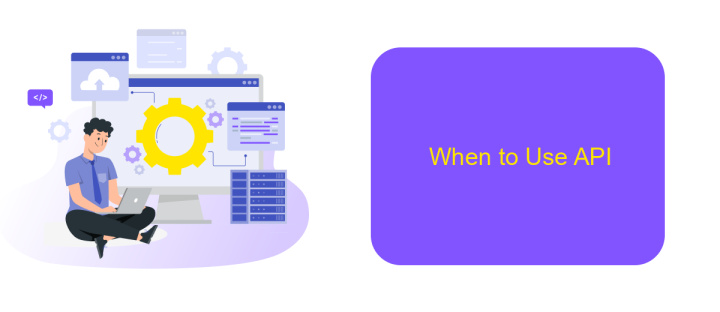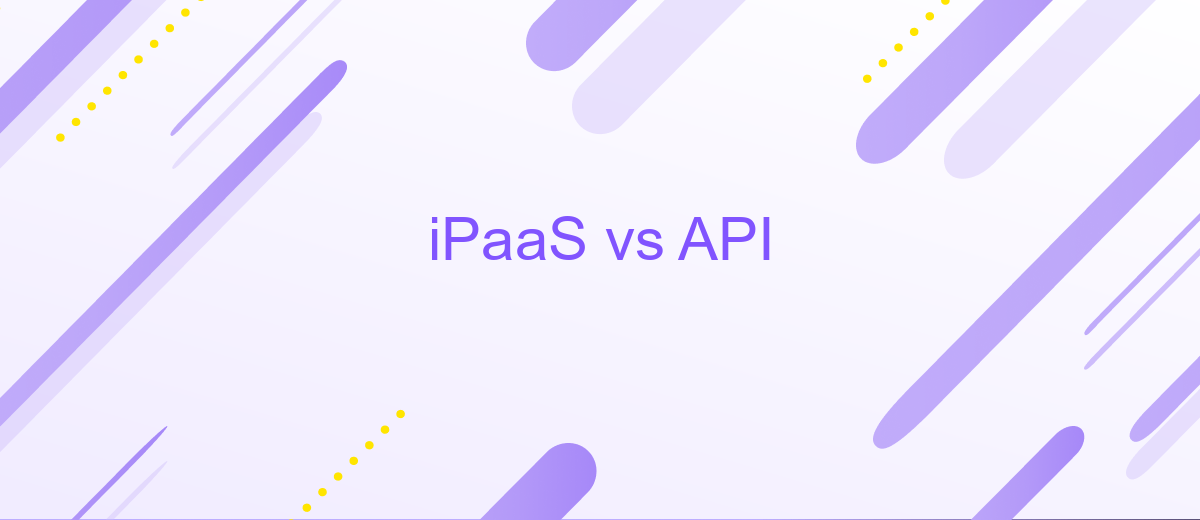iPaaS vs API
In the rapidly evolving landscape of cloud computing and digital transformation, businesses are increasingly relying on integration solutions to streamline operations and enhance efficiency. Two prominent approaches are Integration Platform as a Service (iPaaS) and Application Programming Interfaces (APIs). This article explores the differences, advantages, and use cases of iPaaS versus APIs, helping you determine which solution best fits your organizational needs.
What's API?
An API, or Application Programming Interface, is a set of rules and protocols that allows different software applications to communicate with each other. By defining the methods and data structures that applications use to exchange information, APIs enable seamless integration and interoperability between disparate systems.
- Facilitates communication between different software systems
- Defines methods and data structures for interaction
- Enables seamless integration and interoperability
APIs are crucial for modern web services and applications, allowing them to connect and share data effortlessly. For instance, ApiX-Drive is a service that simplifies the process of setting up integrations between various applications, making it easier for businesses to automate workflows and improve efficiency. By leveraging APIs, companies can enhance their digital ecosystems and provide better user experiences.
What's iPaaS?

iPaaS, or Integration Platform as a Service, is a cloud-based solution designed to connect disparate systems, applications, and data sources within an organization. It provides a unified platform that enables seamless integration, data synchronization, and workflow automation across multiple environments. By leveraging iPaaS, businesses can streamline their operations, reduce manual effort, and enhance overall productivity. iPaaS solutions typically offer pre-built connectors, drag-and-drop interfaces, and real-time monitoring, making it easier for users to set up and manage integrations without deep technical expertise.
One of the notable iPaaS providers is ApiX-Drive, which simplifies the integration process by offering a wide range of connectors for popular applications and services. With ApiX-Drive, users can quickly create automated workflows, synchronize data between systems, and monitor integration performance through an intuitive dashboard. This service is particularly beneficial for organizations looking to enhance their digital ecosystem without investing heavily in custom development or complex IT infrastructure. By utilizing ApiX-Drive, businesses can achieve greater agility and efficiency in their operations.
Difference Between API and iPaaS

APIs (Application Programming Interfaces) and iPaaS (Integration Platform as a Service) are both crucial for modern software integration, but they serve different purposes and offer distinct functionalities.
- Purpose: APIs enable direct communication between software applications, allowing them to exchange data and functionalities. iPaaS, on the other hand, provides a platform to manage and integrate multiple APIs and systems seamlessly.
- Complexity: APIs require developers to write custom code for each integration, whereas iPaaS solutions like ApiX-Drive offer pre-built connectors and a user-friendly interface to simplify the integration process.
- Scalability: While APIs can be scalable, managing numerous APIs can become complex. iPaaS platforms are designed to handle multiple integrations efficiently, making them more scalable for large enterprises.
In summary, while APIs are essential for enabling communication between applications, iPaaS platforms like ApiX-Drive offer a more comprehensive solution for managing and scaling these integrations. Choosing between them depends on your specific needs and technical capabilities.
When to Use API

APIs (Application Programming Interfaces) are essential when you need to enable direct communication between different software systems. They allow applications to interact seamlessly, providing the necessary data exchange and functionality without manual intervention. APIs are particularly useful when you require real-time data synchronization and high levels of customization.
Using an API is ideal when you need to integrate specific features or services into your application. For instance, if you want to incorporate payment processing, social media interactions, or geolocation services, APIs can offer a straightforward and efficient way to achieve these integrations. They provide a flexible and scalable solution for various business needs.
- Real-time data synchronization
- High levels of customization
- Incorporating specific features or services
- Scalable integration solutions
For businesses looking to streamline their integrations, platforms like ApiX-Drive can be extremely beneficial. ApiX-Drive simplifies the process of connecting different applications, automating workflows, and ensuring seamless data flow. This service can save time and resources, making it easier to leverage the full potential of APIs without extensive technical expertise.
When to Use iPaaS
iPaaS (Integration Platform as a Service) is ideal for organizations that need to seamlessly integrate multiple applications and data sources without extensive coding. It is particularly useful for businesses undergoing digital transformation, as it allows for the quick and efficient connection of disparate systems, thereby enhancing workflow automation and data synchronization. Companies looking to streamline operations and improve data accuracy will find iPaaS solutions invaluable.
For instance, services like ApiX-Drive can simplify the setup of integrations by offering a user-friendly interface and pre-built connectors. This can save significant time and resources, making it easier for non-technical staff to manage integrations. Additionally, iPaaS is beneficial when scalability and flexibility are crucial, as it can easily adapt to evolving business needs and integrate new applications as required. Therefore, organizations seeking to enhance agility and operational efficiency should consider leveraging iPaaS solutions.
FAQ
What is the primary difference between iPaaS and APIs?
Can iPaaS work without APIs?
Which is more suitable for complex enterprise-level integrations, iPaaS or APIs?
How do iPaaS platforms handle data security?
What are the benefits of using a service like ApiX-Drive for automation and integration?
Strive to take your business to the next level, achieve your goals faster and more efficiently? Apix-Drive is your reliable assistant for these tasks. An online service and application connector will help you automate key business processes and get rid of the routine. You and your employees will free up time for important core tasks. Try Apix-Drive features for free to see the effectiveness of the online connector for yourself.

